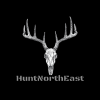HuntNorthEast
Well-Known Member
Lately, things seems to go in some strange directions in threads during the off season. For those of you that are simply here to talk products and hunting, let's get back to that! That is the ultimate reason why myself and I am sure most of you, joined SaddleHunter in the first place. I enjoy reading people's opinions on equipment, their innovations, their mistakes, successes, tactics and most of all seeing successful hunt pictures!
So everyone, lets hear it! Share your favorite tactics for closing in on a mature whitetail. Why it works for you, and what area you are from! I say area only because some things won't apply to everyone of course. Let's keep it clean reading please, what works for you may not work for someone else, no need to argue.
I'll kick it off. I like funnels/pinch points. Preferably on the edges of big swamps containing swale or maple whips. Where I can see a long ways as well as into surrounding timber. For my deep woods sits, I like big rolling hardwood ridges with cedars and young white pine mixed in. I find the cedar beds, map the wind, and close in. Keep in mind, both tactics revolve around what the mast looks like for the season and where the groups of deer tend to move. One area may be hot for years, or change year to year.
Let's have a good 2021 season!

So everyone, lets hear it! Share your favorite tactics for closing in on a mature whitetail. Why it works for you, and what area you are from! I say area only because some things won't apply to everyone of course. Let's keep it clean reading please, what works for you may not work for someone else, no need to argue.
I'll kick it off. I like funnels/pinch points. Preferably on the edges of big swamps containing swale or maple whips. Where I can see a long ways as well as into surrounding timber. For my deep woods sits, I like big rolling hardwood ridges with cedars and young white pine mixed in. I find the cedar beds, map the wind, and close in. Keep in mind, both tactics revolve around what the mast looks like for the season and where the groups of deer tend to move. One area may be hot for years, or change year to year.
Let's have a good 2021 season!


